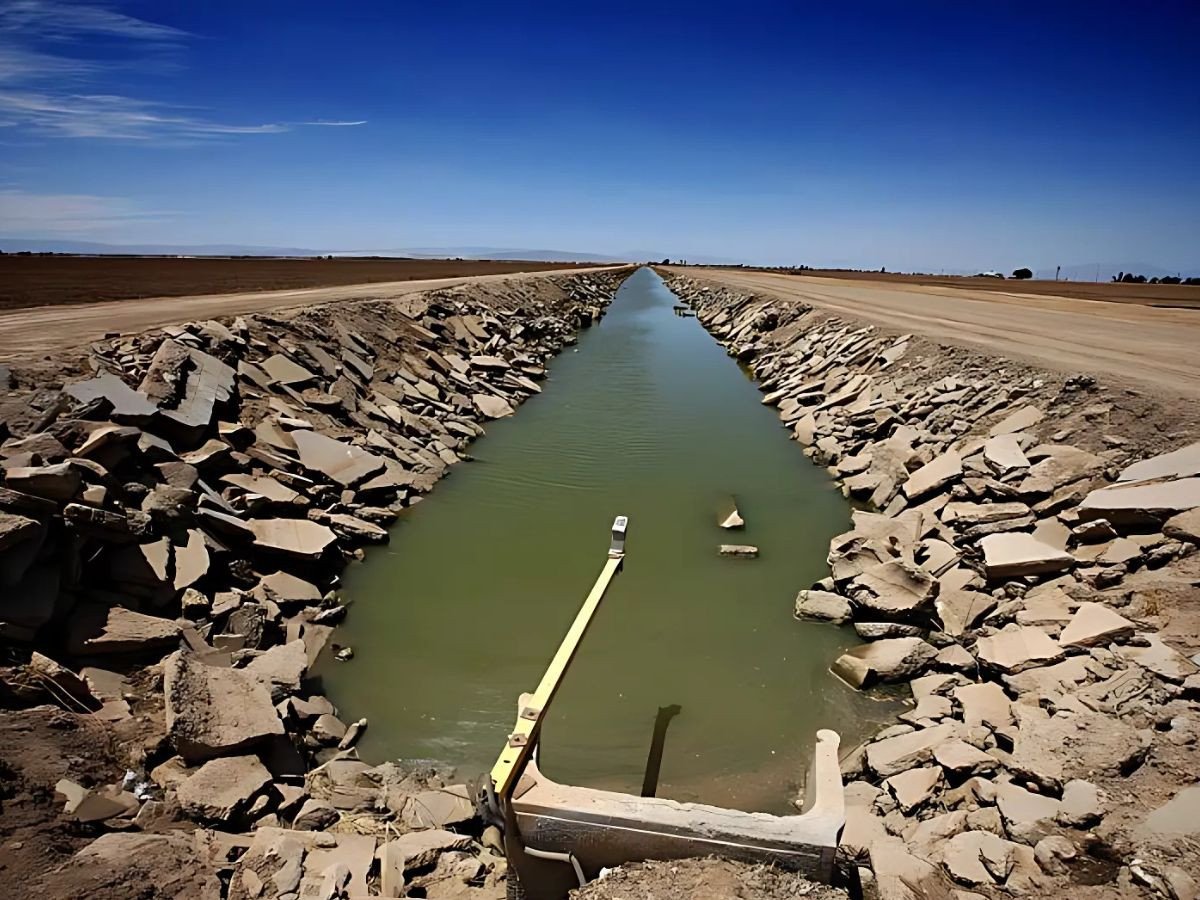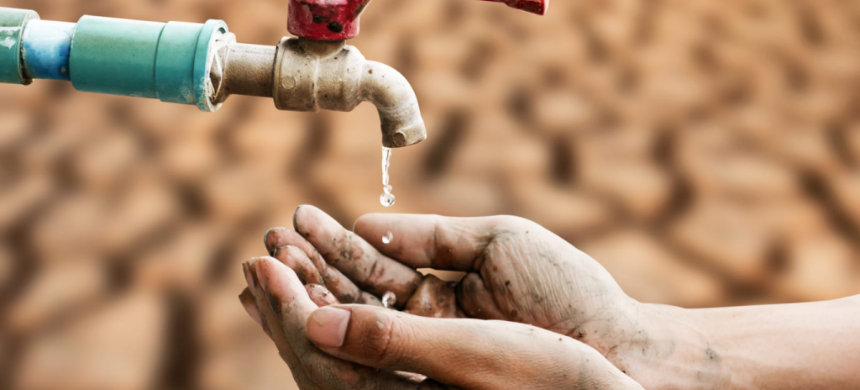Pakistan’s Water Crisis: A Wake-Up Call for Action
Imagine waking up to a day without water. No water to brush your teeth, no water in the kitchen, no water in the bathroom—none to drink. This scenario, once a dystopian nightmare, is fast becoming a potential reality for Pakistan. As an environmental specialist and advocate for water management and sustainability, I must urgently warn that Pakistan is dangerously close to a severe water crisis, one that could soon spiral into a full-blown drought emergency.

This is not a hypothetical situation; it is a present-day issue, visibly unfolding before us. Our groundwater levels are dropping by over one meter annually, yet there is no national framework in place to manage or conserve this essential resource sustainably. Every drop of rain that falls is a gift, but instead of capturing it, we let it run off into drains, gutters, and sewers, ultimately ending up in the sea. In the second half of 2024, rainfall was 41% below average, but instead of conserving what little we received, it was wasted.
Pakistan’s water infrastructure—dams, canals, and reservoirs—is outdated, insufficient, and sorely neglected. Iconic dams like Tarbela and Mangla, which once stood as the backbone of our water storage system, now struggle with sedimentation and diminishing capacity. With lower-than-average rainfall, these two dams are at their dead level. They were never just concrete structures; they were the lifeblood of our irrigation and agricultural economy, but today, they are gasping for survival.
The Indus, Ravi, Sutlej, and Jhelum rivers, once the historic lifelines of Pakistan’s agriculture, are drying up. Their flow has been reduced to a mere trickle, drained not just by climate change but by political apathy, cross-border disputes, and domestic mismanagement. Groundwater, once a reliable backup, is depleting at a terrifying rate of 1 meter per year, especially in urban areas. This is no longer just a numerical decline—it is a stark warning of a growing gap between us and our very survival.
While we invest heavily in infrastructure like flyovers and shopping malls, our taps are running dry. We have mistaken concrete development for true progress. The real measure of national success should not be the size of roads, but the sustainability of our water resources.

In Lahore, one of the country’s most populated cities, clean groundwater is receding with each passing month. In parts of Balochistan, wells that once supplied abundant water are now dry and useless. Farmers in rural Sindh are abandoning their land, not due to a lack of effort, but because there is simply no water left.
This is not just an issue for rural areas; urban centers are just as vulnerable. Karachi, with an annual rainfall of less than 7 inches, lacks the infrastructure to collect and store even that little. Instead, rainwater becomes a source of flooding, only to disappear into the Arabian Sea, wasted. Lahore, with 37 inches of rainfall each year, has no large-scale rainwater harvesting system, and even Islamabad, with its 31 inches of annual rainfall, faces seasonal shortages.
While we pour money into urban expansion, our water resources are slipping away. We have confused flashy development with real, sustainable progress. The true measure of a nation’s advancement lies in how well it manages its water, not in the size of its buildings.
The tragic irony is that this crisis is not a mystery; it is well-documented. We have discussed it endlessly in seminars, media debates, and policy discussions, yet we remain stuck in political gridlock. Once seen as a hopeful solution for water security, the Kalabagh Dam now stands as a symbol of political division. Rather than seeking consensus, successive governments have used the issue to score political points, resulting in decades of inaction.
Water policies in Pakistan remain little more than empty promises—unfunded, unimplemented, and uninspiring. We talk about water conservation, climate adaptation, water harvesting, and smart irrigation, but where are the concrete actions? Who is held accountable?
Our water management agencies, including the Water and Power Development Authority (WAPDA) and provincial irrigation departments, are underfunded, understaffed, and lack the technical expertise needed to tackle today’s challenges. Reform is essential, but without greater transparency and leadership, they cannot meet the demands of the 21st century.
The signs are clear. In the coming years, urban water demand in Pakistan is projected to reach 10 million acre-feet. Yet we remain woefully unprepared. If current trends persist, Pakistan could soon become one of the most water-stressed countries in the world. This will lead to food insecurity, economic disruption, and large-scale internal displacement. Water conflicts, once a distant threat, are rapidly becoming a regional reality.
Already, tensions between Punjab and Sindh have erupted over the controversial allocation of water to six canals intended for irrigating the Cholistan desert. While Punjab sees this as an essential development project, Sindh fears that it will exacerbate water scarcity and violate the 1991 Indus Waters Accord, which guarantees equitable distribution among provinces. This situation underscores the urgent need for a transparent, cooperative framework for water governance that prioritizes sustainability over political discord.
However, all is not lost. In some parts of Pakistan, communities are already taking matters into their own hands. In Karan, Cholistan, villagers are constructing rainwater-harvesting tanks, collecting every drop of rain to irrigate their fields and recharge underground wells. They have no government support, but they possess something we sorely lack—the will to survive. Their efforts may seem small, but they are revolutionary. They show us that the answer doesn’t always lie in mega-dams or foreign aid; sometimes, it begins with community action and a collective commitment.
We don’t need to wait for government miracles. The path forward is clear. Mandate rooftop rainwater harvesting systems in urban buildings. Provide incentives for their adoption. Invest in small and medium-sized dams across rural areas, which are faster and cheaper to build and maintain. Promote greywater recycling to reduce pressure on fresh water. Shift to water-efficient irrigation methods, like drip irrigation, and use laser land leveling to conserve water. Our current irrigation system is archaic and wasteful, with over 50% of water lost to seepage and mismanagement.
Pakistan already has a National Water Policy. What it lacks is implementation. There must be strict timelines, measurable outcomes, and political consensus. Water conservation needs to become a public movement. Just as we have mobilized around plastic pollution and air quality, we must cultivate “water literacy” to change how we use water in homes, schools, offices, and industries.
Water is not just a resource; it is the essence of life. Our ancestors revered rivers and springs, but today, we treat them with neglect. Yet, it is not too late. We still have time to choose a different future—a future where Pakistan’s rivers flow again, where no child goes thirsty, where farmers can grow their crops with confidence, and where our cities live in harmony with rain, not in fear of drought.











